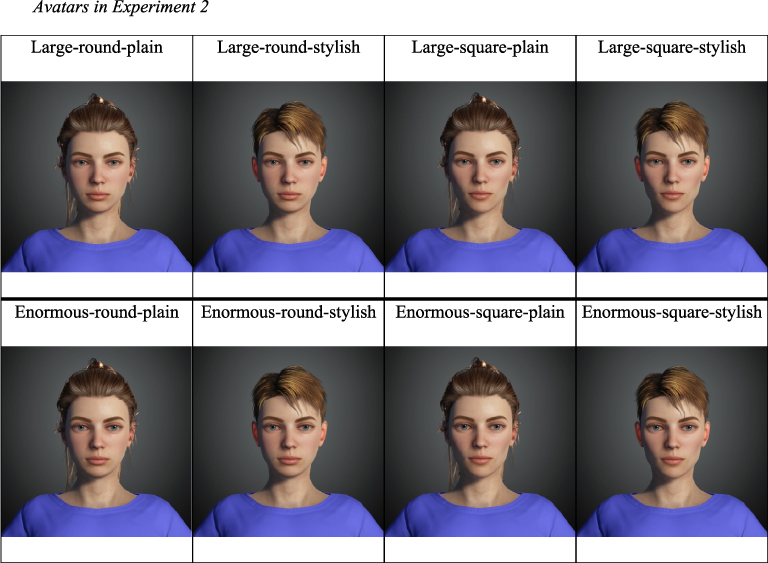
This article examines the influence of facial features on the perception and evaluation of avatars in virtual environments. As people increasingly engage with avatars in virtual spaces, the visual appearance of these digital representations is critical to the design of human-computer interaction. Drawing on research on the evaluation of human faces, this study investigates how facial features influence perceptions of an avatar’s attractiveness, trustworthiness, personality traits, and other characteristics. We conducted two factorial experiments that manipulated the avatars’ eye size, jaw shape, and hairstyle. It was found that larger eyes conveyed a more positive impression and increased perceptions of attractiveness, sympathy, trustworthiness, extraversion, and openness. Although avatars with prominent jawlines were rated as more attractive, a prominent jawline was associated with a perception of higher dominance and threat. Stylish hairstyles were associated with higher extraversion and openness but also with lower conscientiousness. This study provides important insights into the design of avatars for virtual applications like gaming, e-commerce, and online therapy. It highlights the complex interplay between facial features and perception and contributes to the knowledge of how avatars can be optimally designed to create the desired impressions in virtual environments.

During these past years, international COVID data have been collected by several reputable organizations and made available to the worldwide community. This has resulted in a wellspring of different visualizations. Many different measures can be selected (e.g., cases, deaths, hospitalizations). And for each measure, designers and policy makers can make a myriad of different choices of how to represent the data. Data from individual countries may be presented on linear or log scales, daily, weekly, or cumulative, alone or in the context of other countries, scaled to a common grid, or scaled to their own range, raw or per capita, etc. It is well known that the data representation can influence the interpretation of data. But, what visual features in these different representations affect our judgments? To explore this idea, we conducted an experiment where we asked participants to look at time-series data plots and assess how safe they would feel if they were traveling to one of the countries represented, and how confident they are of their judgment. Observers rated 48 visualizations of the same data, rendered differently along 6 controlled dimensions. Our initial results provide insight into how characteristics of the visual representation affect human judgments of time series data. We also discuss how these results could impact how public policy and news organizations choose to represent data to the public.